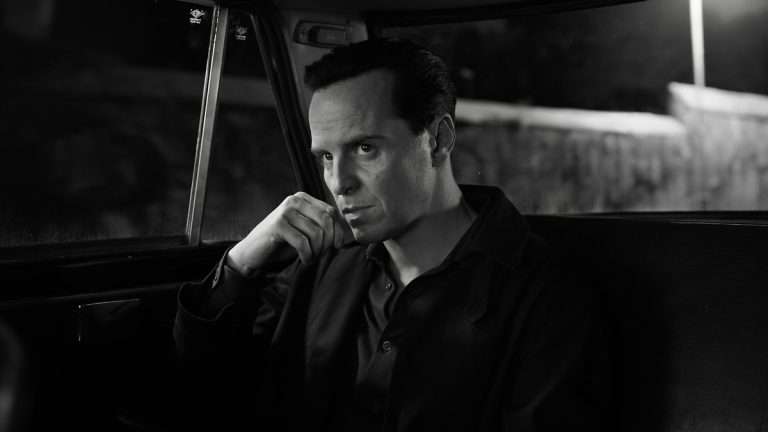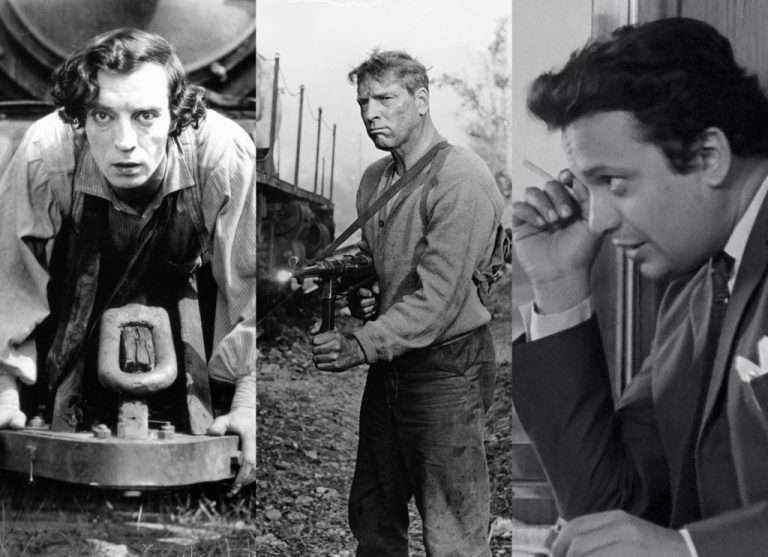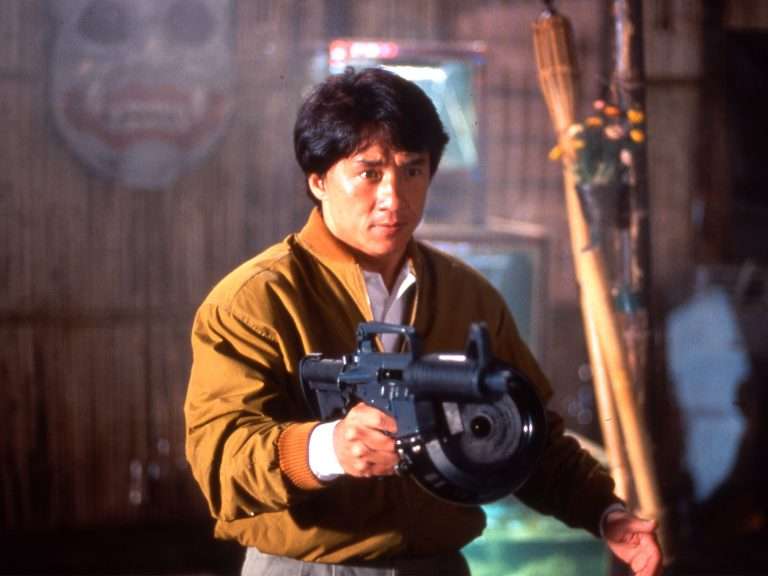10 Best Movies Dealing with Climate Change: Global warming has been giving significant signs to humanity through frequent climate catastrophes and natural disasters. The government and the corporates have been escaping from the mere reality and seriousness of the situation. As a result, the powerless citizens always bear the rage of Mother Nature. The change in the core of a system with a few sacrifices by the privileged can create a domino effect on other elements connected to it. But the greed of human beings is inevitable.
Cinema has always been the voice of the less privileged. It generates empathy and has the power to turn good Samaritans into existentialists that they start thinking about their actions and their repercussions. It reopens the debates that people are too uncomfortable to discuss. In recent years, few influential filmmakers worldwide have made films with captivating storylines that creatively draw concern toward Climate Change. Some of the most celebrated filmmakers have already attempted to highlight environmental issues through their absurd and surreal stylistic genres by the end of the 20th century.
Some commercial World’s End films like The Day the Earth Stood Still, The Day After Tomorrow, Geostorm, and 2012 deal with extraordinary climate conditions due to alien invasions or hypothetical reasoning for the planet’s end. Filmmakers have been making Nature’s Revenge and dystopian films as a thrilling escape ride for general moviegoers. But only a few filmmakers have made masterpieces that force people to think beyond the absurdity.
1. Woman at War (2018)
A Woman at War (2018) is a breathtaking indie satire on climate change. It explores the environmental problem through a feminine gaze. Here, our mysterious eco-warrior is a single choir instructor struggling to adopt an orphaned child. Halla, a 50-year-old Gandhi and Mandela follower, is determined to save the world for her future adopted child. Erlingsson successfully manages to make a film on a serious topic like the climate crisis that pleases critics and audiences alike. She wanders around the green highlands packed with her weapons and bodysuit on a mission to pull the government’s attention toward the local problems caused by its newly constructed aluminum plants.
Halla’s wild lone activism succeeds in doing it for all the wrong reasons. Her other mission is to adopt an Ukranian girl child. The two missions collide in the end, making her realize that she won’t be able to save the world. It is a playful parody of the superhero and spy films where ‘heroism’ is represented in fighting evil which is not present in the real world. In Vikramaditya Motwane’s Bhavesh Kumar and Bong Joo Ho’s The Host, the civilians take it upon themselves to fight their own battles due to the incompetent and corrupt government. In Woman at War, the protagonist takes it upon herself to save her locality anonymously.
2. First Reformed (2017)
Paul Schrader’s environmental drama is one of the most significant films of our time. He highlights the perplexity of the current youth’s despair and the insincere capitalist society in the most contemplative and philosophical way possible. Ethan Hawke plays a disciplined Church priest (Toller) who initially has faith in God and spirituality until he meets Michael, an environmental campaigner who is too afraid of bringing his child into a world where the future is in utmost turmoil (indicating toward our planet’s ecological threat). Michael’s point of view creates havoc in the mind of Toller, who starts questioning his faith and reasoning in God.
Toller slowly comes to terms with the dichotomy of his theoretical ideologies in the real world when he meets the oil polluter industrialist who sponsors his church. Apart from Schrader’s transcendental style of evoking spirituality in his characters, he creates a metaphorical comparison between Toller polluting his own body with alcohol (in the guilt of sending his son to the military, where he died within six months) to the planet’s contamination. Cinematographer Alexander Dylan uses a monochromatic black and white tone with spurts of purple hue. Purple symbolizes technology, modernization, and alienation in films.
3. Mother (2017)
Darren Aronofsky’s Mother is a layered, emotional, and analogical depiction of the current state of the world. His minimalistic plot is about the arrival of uninvited strangers in a couple’s house where the husband might be running his mysterious cult unknown to his wife. But Aronofsky uses this simple plot to represent a surreal representation of the climate crisis. The first unexpected couple represents Adam and Eve, their kids, and other unwanted guests signifying a few of the seven sins of humans like greed, gluttony, envy, lust, and pride. The husband himself is a celebrated poet worshipped by his fans, representing god whose vanity and ego blind him to see the suffering of his wife, who represents ‘Mother Nature.’
The baby of the wife/mother represents the flora and fauna, which is dependent on mother nature for survival. The slaughtering of the baby by all the guests causes the mother’s final meltdown, which burns down the whole house. It signifies the exploitation, butchering, and slavery of animals and trees for human greed. The never-ending consumption causes an ecological misbalance, and Mother Nature takes revenge through mass destruction through calamities such as pandemics, forest fires, floods, earthquakes, etc. The next day the wife wakes up with her and the house in the same condition indicating the power of mother nature to heal itself after destruction but not the dead humans.
4. Parasite (2019)
Bong Joo Ho’s Satirical socio-economic thriller explores the close relationship between poverty and climate crisis. Although the core plot is not about climate change, the privilege of the Parks, distanced from real-world problems, is visually evident in one of the significant flooding sequences in the film. The less privileged will always be more vulnerable to nature’s uncertainty as they can barely afford safely constructed houses. The film reveals a unique difference in the architectural construction of Korean homes through stairs and elevations to signify the evident hierarchy of society in the real world.
The privileged consider a plot on the high hills while the Kims accommodate in basements homes as the water levels are rising. But unlike the high-rise buildings, they lie on the low level of the topographical land. The Park family’s luxurious house is specially designed on an elevation to avoid flooding and protects from any uncertainty. The gap between Kim and Parks is due to their social and financial capital. Climate change even worsens this gap and inequality. The flood significantly influenced Kim’s family’s self-esteem, as they faced humiliation from the wealthy Parks family.
5. Beasts of the Southern Wild (2012)
The magical realism in Beasts of the Southern Wild represents an intimate connection between humans and their environment. Set on a fictional island surrounded by real problems and emotions, the film unfolds from the perspective of a little girl (Hushpuppy), one of the natives of the small community, surviving together on the island. The inhabitants strive to find solace among each other in the darkest times. Zeitlin debatably romanticizes poverty until the characters meet with a powerful storm, which causes the loss of their habitat and search for a new place to migrate.
Zeitlin focuses on the persistence of the community through the escapist subconscious of Hushpuppy. Hushpuppy constantly imagines the 500-year-old aggressive bulls who were frozen and extinct might again come to life due to melting ice caps. The bulls represent the beast which is a metaphor for the climate crisis. She constantly worries about the cattle’s migration towards her island, which is already submerging due to rising sea levels. Hushpuppy stands against them to protect her community, and they oblige her to live, which indicates the mythical elements coming to life through a kid’s subconscious. This would not happen in the real world, but climate change is notably real, and nature won’t oblige until it is respected.
Read More: Every Bong Joon-Ho Film Ranked
6. Snowpiercer (2013)
Snowpiercer cleverly criticizes how climate change and the class divide are directly associated. In Snowpiercer, the apocalypse results from human’s failed attempt to reverse global warming. But, the fictional endeavor to reverse engineer the weather is not nearly impossible, as researched by several scientists. The change in weather leads humans to live in a weather-regulated train, forever running amidst the frozen ghost world. In the Dystopian world, the class divide worsens as the affluent enjoy the luxuries while the destitute survive on protein bars. Like Parasite, in Snowpiercer, the less privileged are more prone to suffer the extremities of climate catastrophe.
In The Hunger Games, the less privileged had to fight with each other to survive, while the rich gawked at the deadly game for entertainment. Bong Joo Ho’s idea emphasizes the price of questioning and changing traditional systems or structures may either lead to destruction or the start of something entirely new, oblivious to human certainty. The social hierarchy has been in human civilization for centuries, and the privileged always get the benefit from time and again. Snowpiercer is a cautionary tale that reveals the worst side of humanity amidst any apocalypse.
7. Delicatessen (1991)
Jeane Pierre Jeane’s Delicatessen is a forbidden romance intertwined with black humor and set in a dystopian world. The film grew a cult following amongst cinephiles as one of the best films created on climate catastrophe. The film deals with the rise of cannibalism among human beings due to food and water shortage. Jean Pierre increases the intensity of his classic warm-hued color palette to give the feeling of an apocalyptic world of barren vegetation, hopelessness, and apathy. Delicatessen cautioned how climate change will affect the social, economic, and moral structure.
The butcher (Mr. Clapet) gives vacancies to his tenants in exchange for food or some menial work. The deficiency of ration has led to an increase in its value forcing the inhabitants to use it as a currency like a barter system. The butcher’s underlying motive is to kill a tenant at a time and feed the flesh to other tenants. He always lurks in search of a vulnerable resident who might fall into his trap. The scarcity of resources can push humans to sulk in the past when they contend, maneuver, or even massacre each other to attain limited resources. The butcher’s mistress and daughter enjoy the privilege of free food, unlike the other residents. It signifies the class divide and Nepotism amidst the unfair division of resources.
8. Princess Mononoke (1997)
Set in the mystical world of Studio Ghibli, Princess Mononoke is a battle between nature and humans set in Japanese animated fiction. In Miyazaki’s environmental parable, the possibility of nature’s victory is inevitable. The ego of humans has blinded them to believe that they are not part of nature. In the film, a cursed prince Ashitaka finds a rapidly growing Iron Town.
Lady Eboshi leads the town and is determined to spread the roots of industrialization by cutting forests. She is rebelled against by a forest girl called San, raised by forest spirits and wolves. Lady Eboshi tries to manipulate Ashitaka into believing that the forest princess is against human beings. Although Ashitaka got smitten by the princess, he also shows gratitude towards the forest spirit, who slowly heals his cursed wound. Lady Eboshi represents the selfish capitalists, and the forest spirit represents nature. When the forest spirit transforms into a skinwalker, it takes the whole vegetation and living beings, including humans. In the end, Miyazaki represents the strength of nature, which can wash away the entire planet and start a new life all over again.
9. Soylent Green (1973)
Soylent Green is a catastrophe thriller set in dystopian New York, where humanity survives with scarce food and vegetation. Before inventing energy-conserving engines, the world suffered its first oil crisis in the 70s, which heavily inspired the film. It is one of the first films that accurately depicts rising heat waves due to greenhouse gases. It is amusingly set in 2022. There is a lot of debate about what the film got right about the present and what not. Apart from Delicatessen and Snow Piercer, cannibalism is the most horrifying highlight in the movie.
The film offers a sharp reflection on how capitalism directly relates to various tragedies worldwide. The destitute are exploited by hiding the reality of ‘Soylent Green’ and heavily advertising it as an ethically consumable and edible product. The unbearable heat waves, high population, exhausted non-renewable resources, and absence of flora or fauna have led humanity to survive on the edges. The poor are the ones who suffer the most, while the wealthy bureaucrats enjoy air-conditioned mansions with modern gadgets and the company of young attractive women.
10. Interstellar (2014)
Interstellar is a sci-fi space thriller that mainly deals with a future where unfavorable weather conditions are disabling humans to survive. It is considered one of the most realistic space films ever made, where the possibility of finding a similar planet like Earth out of the galaxy is possible. Although no technology is made to go out of the galaxies, according to scientists, it is not impossible. The film revolves around a single father and a retired pilot Cooper, who finds the secret mission of NASA through some paranormal occurrences.
Nolan simplifies the scientific elements for the audience (a combination of possibility and speculation) to convince the audience as the film ends in a full circle. However, Nolan never particularly mentions the climate crisis, global warming, or the detailed cause of the problem but covers everything with ‘ecocide’ in the plot. Although there is a fairytale ending of Earth’s potential to sustain life solved by Murph, it ignores the complexities of human sociological, political, and financial structures.

















